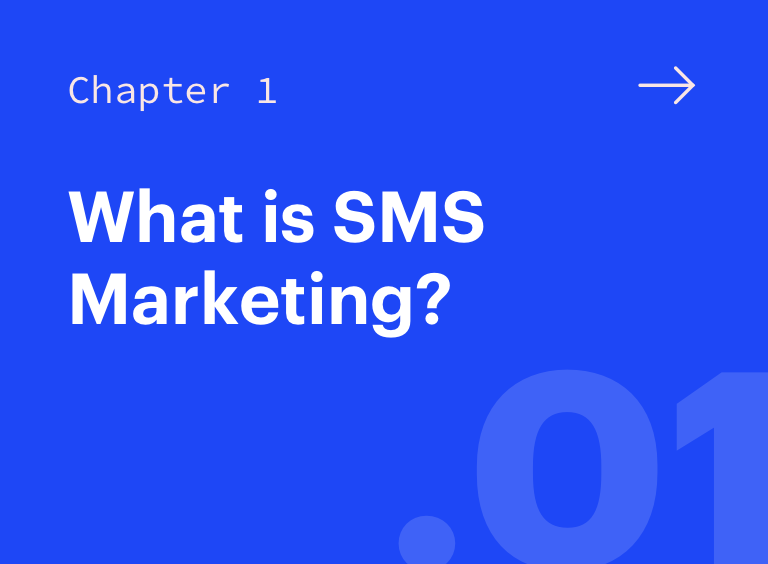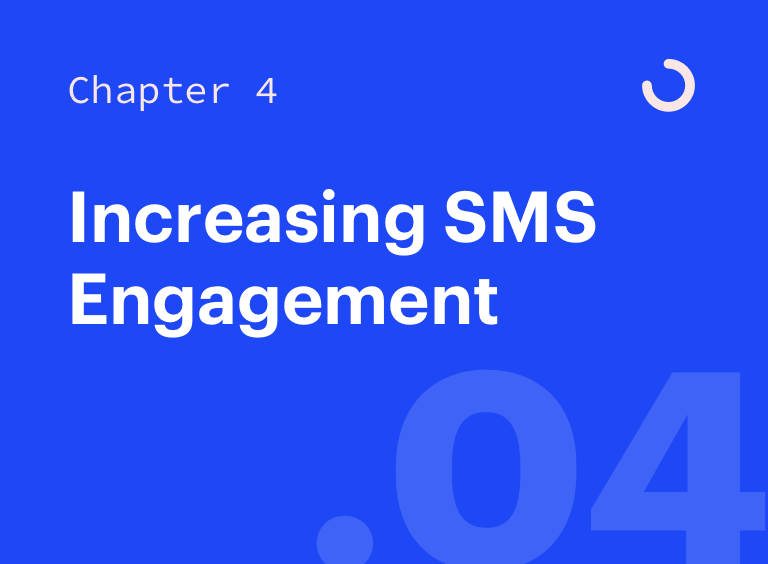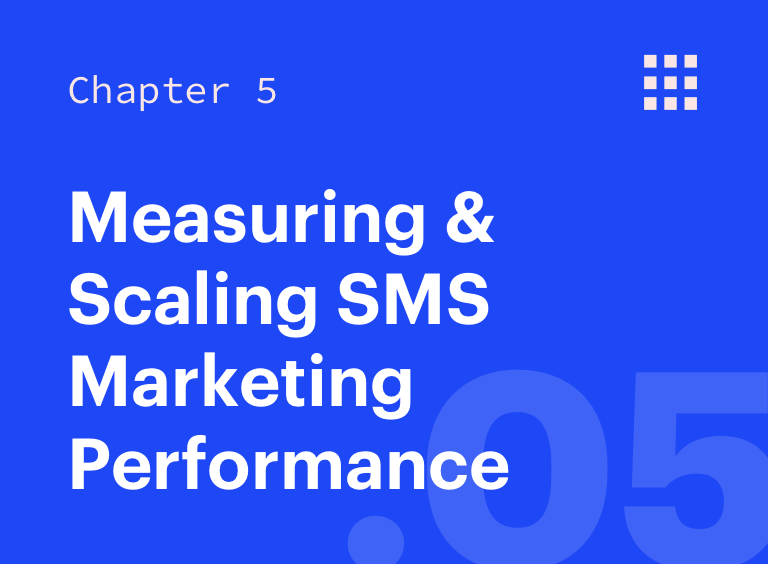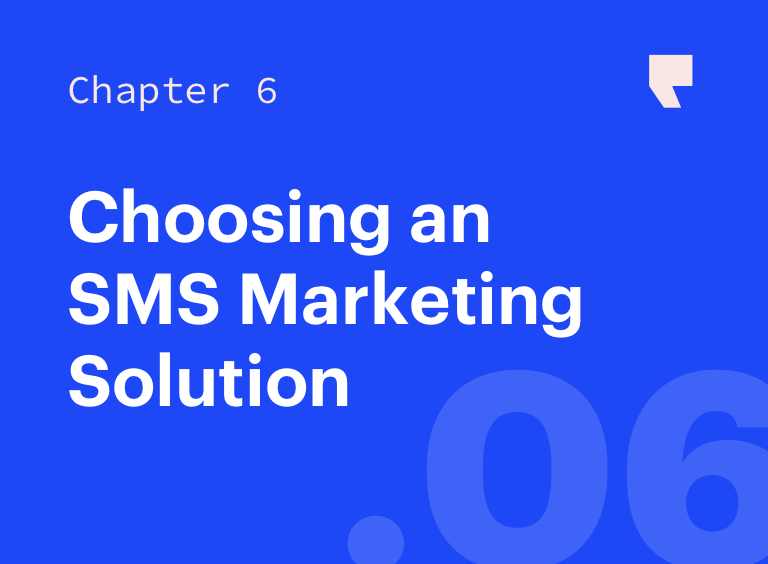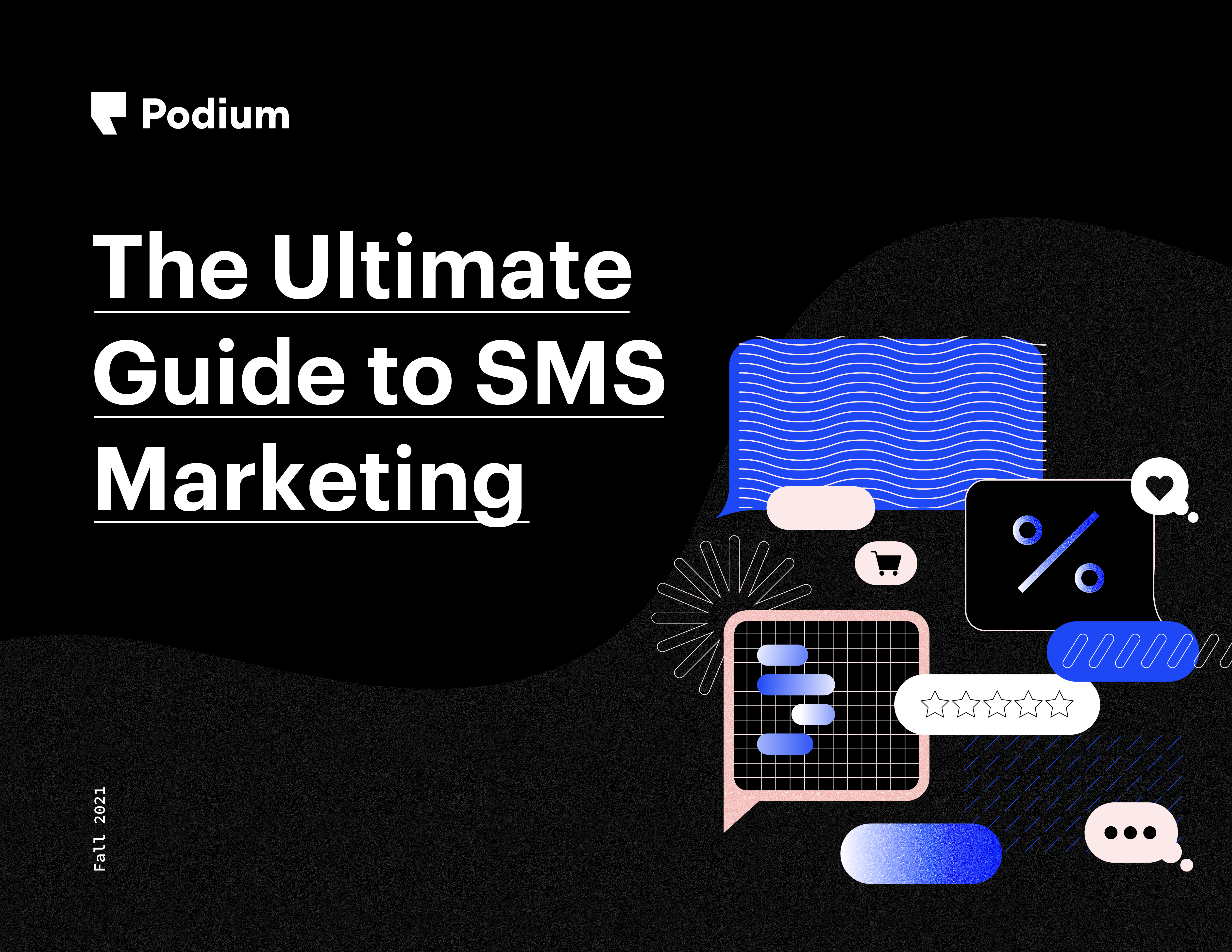
SMS Marketing
Growing Your Opt-in List
Did you know local businesses have a unique advantage to reach their consumers on mobile more often than major chains or ecommerce players? Read on to learn:
- How you can grow your list quickly and naturally
- What touchpoints you should use
- The rules for messaging compliantly
Growing Your Opt-in List
The majority of local businesses find maximizing their marketable SMS list to be the hardest part of SMS marketing. Why? Many organizations are not collecting phone numbers, forgetting to collect explicit consent, or failing to maximize their opportunities to collect opt-ins.
However, local businesses have an unfair advantage. As we mentioned previously, consumers are 21% more likely to opt-in to local businesses’ text promotions over major chain or big-box retailers. And they’re 45% more likely to opt-in over online or ecommerce businesses.
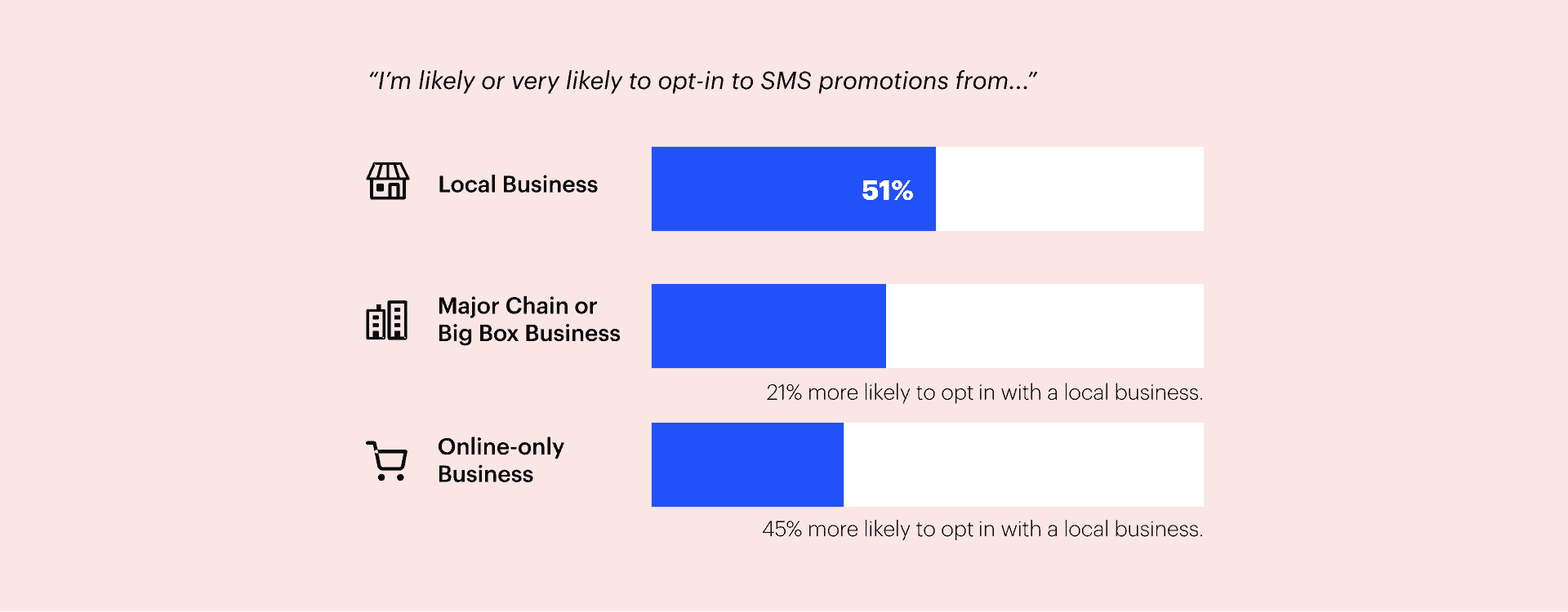
So how do you turn interactions into opt-ins? The key is to integrate opt-in entry points at every possible step of the customer journey. There are a number of touchpoints along your customer journey where collecting an opt-in is natural and even expected. If you take advantage of them, the list will build itself.
Website touchpoints
Your website is often the first touchpoint to capture a prospect’s attention. It’s also a great way to collect opt-ins from people who haven’t transacted yet and can even serve as a mechanism to convert leads into customers.
1. Online sign-up pages and forms. This collection type involves creating landing pages that are dedicated to collecting opt-ins. With this touchpoint, location-specific pages can be generated and shared via URL or QR code.
Remember that not all sign-up pages are created equal. Effective pages provide fields to collect names and phone numbers, use clear legal language to communicate that they’re collecting information for SMS marketing purposes, and should be customized to fit your company’s brand.
2. Website banners, pop-ups, and prompts. With this collection type, customers opt-in by filling out a banner pop-up that appears on your webpage after a specific time delay.
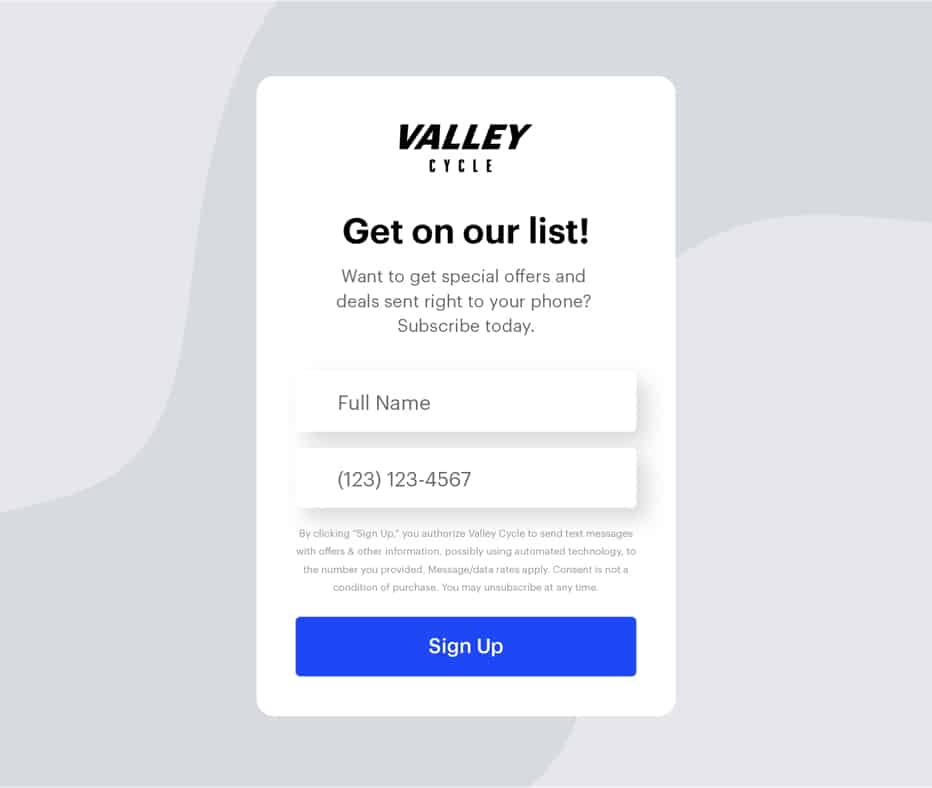
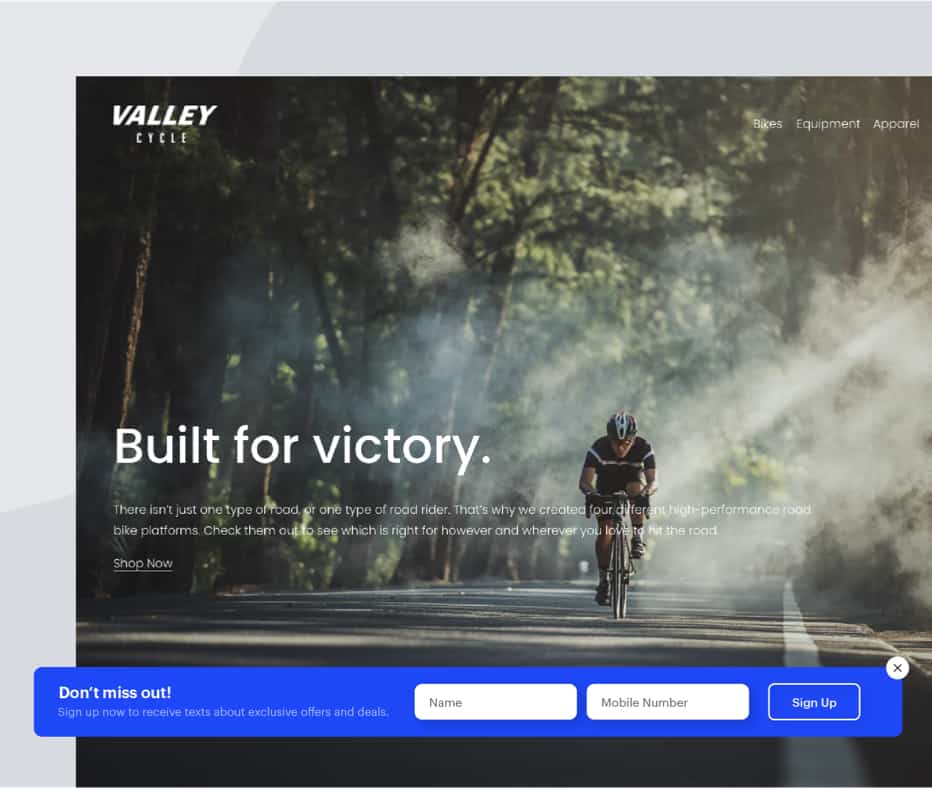
3. Website chat. Website chats are tools where website visitors can do things like ask questions, set appointments, and check for availability. They’re also opt-in wellsprings.
You can easily leverage your website chat to include an opt-in touchpoint whenever someone leaves an inquiry. This might involve using an embedded lead form or “Contact us” form (with the proper legal consent).
4. Point of sale or transaction. Collecting opt-ins at the point of sale can be a game-changer if you make it easy, like giving the option after someone transacts through an SMS invoice. You might even consider integrating an opt-in point within a check-out cart or a POS system that can collect it.
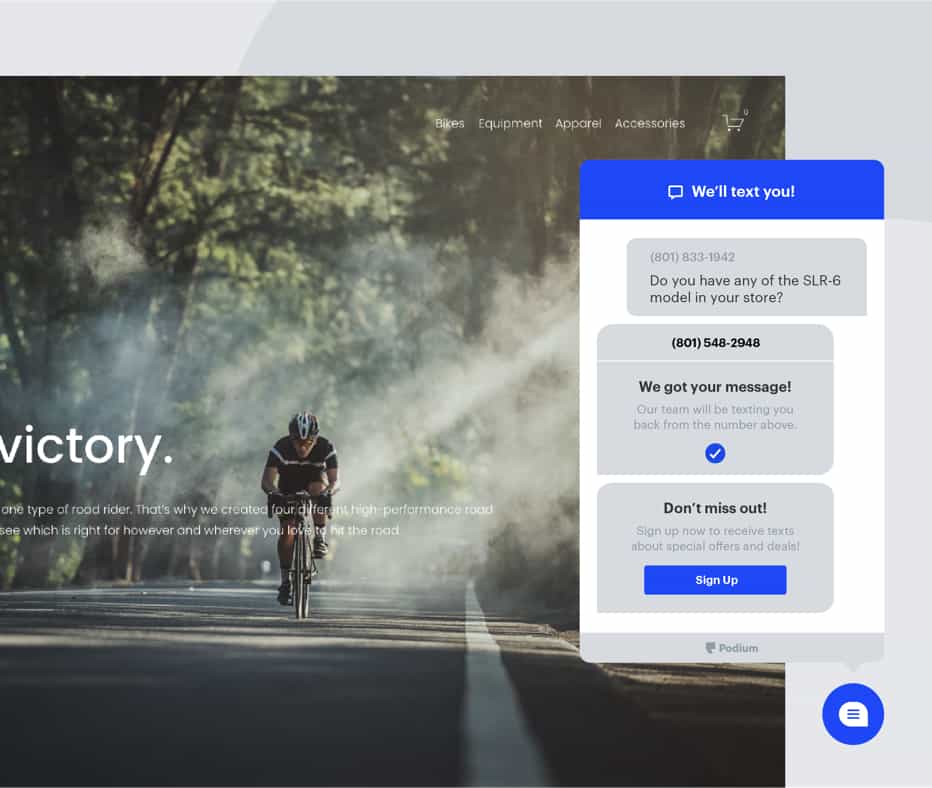
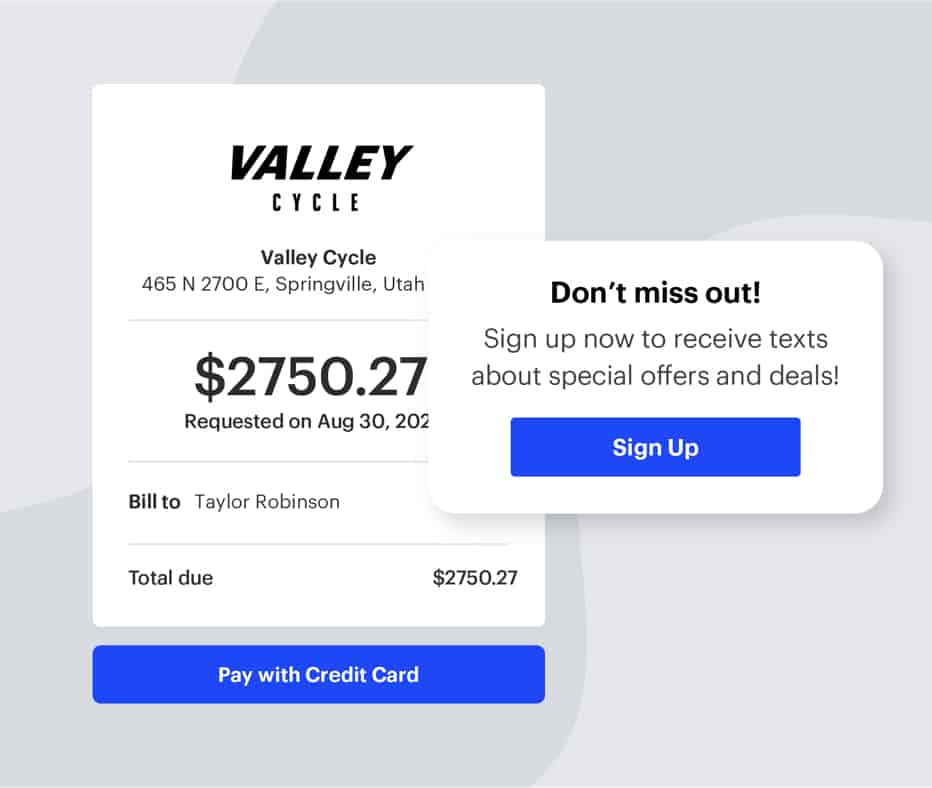
5. Review. This is the opt-in touchpoint that closes the loop. If you’re already leveraging a reputation management solution like Podium Reviews, you can capture the opt-in after a review is sent. People who leave favorable reviews are probably more likely to want to receive future promotions.
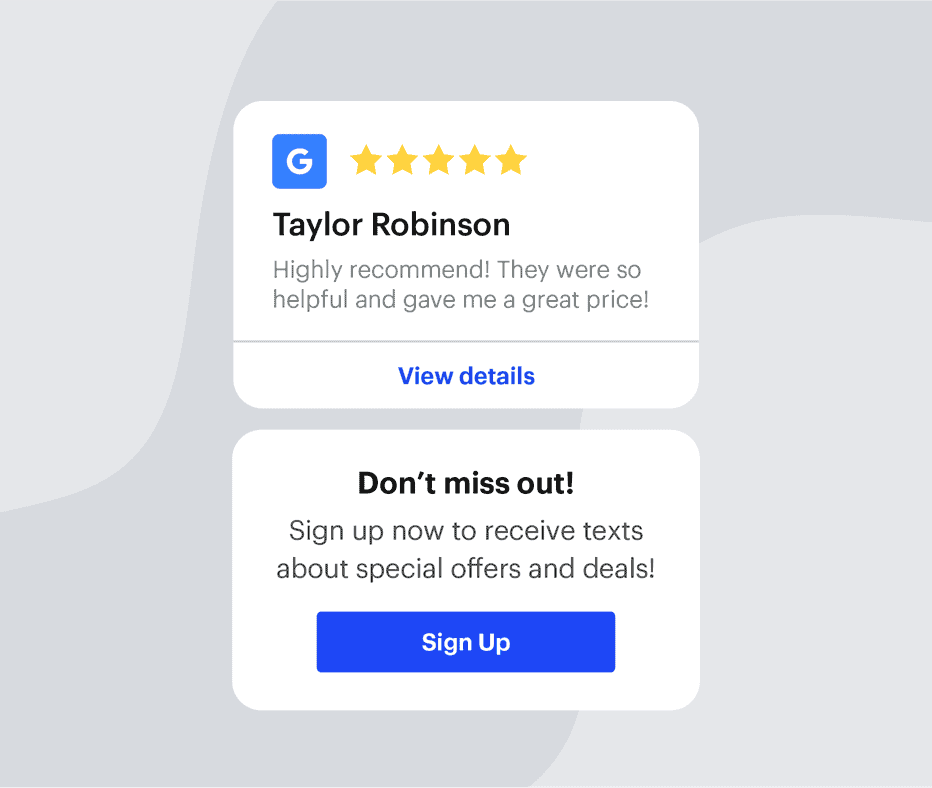
Hybrid touchpoints
These days, local businesses can conduct their business in-store, online, or face-to-face—even some combination of all three.
With the right tools, you can gather opt-ins wherever and however you operate. With that in mind, here’s a list of out-of-the-box ways you can present your sign-up forms to build your list.
1. URL & QR code. Once you’ve set up an online sign-up form, you can share them via URL or QR Code.
- URLs are a great way to link prospects and customers directly to your sign-up form. They’re particularly useful for sharing over social media and converting an existing email marketing list.
- QR codes are a great way to present your sign-up forms on printed (wall signs or table tents) and digital signage (televisions/monitors/tablets that are present in store). You can also present them via product packaging, business cards, stickers, and cash register stands or physical check out locations. With this method, all your customers have to do is scan the QR code with their smartphone camera and get redirected to your opt-in sign up form.
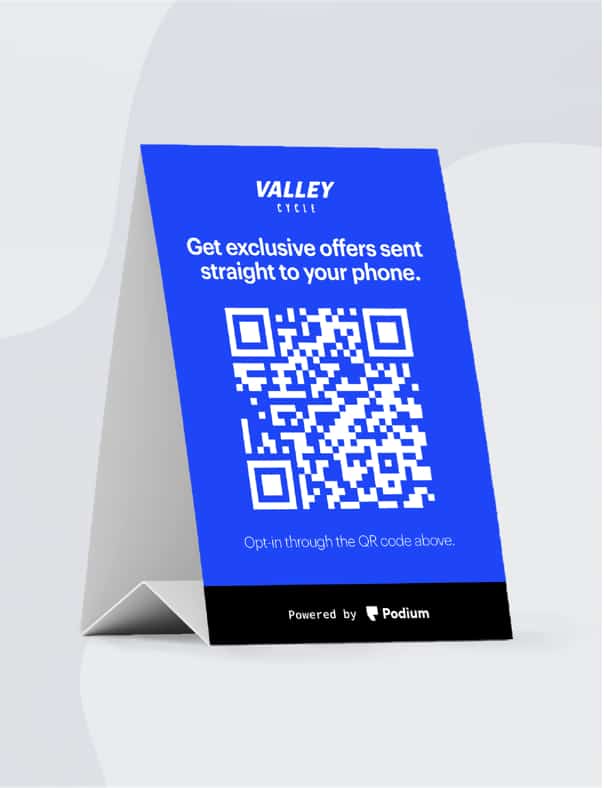
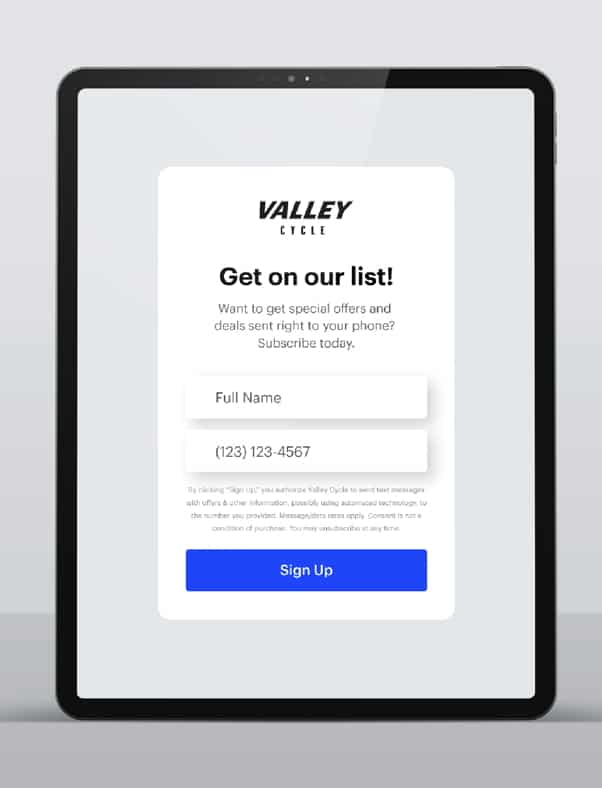

2. Sign-up/opt-in station. An online sign-up form that can be displayed on a tablet, smartphone, computer, or laptop is a great way to collect opt-ins face-to-face. Many businesses find it effective at events, trade shows, and pop-ups. Particularly effective use cases might include a home services business that conducts services at customers’ homes or retail stores with lots of foot traffic.
3. Text-to-join “keyword.” Another effective method for collecting opt-ins from prospects and customers is establishing a textable “keyword.” This form of opt-in doesn’t rely on having an online sign-up page to be set up. But it requires a business to offer a keyword like “Subscribe,” which can then be texted to a business’s number to opt-in. A textable keyword—much like a QR code—can be printed or displayed digitally alongside the appropriate consent language.

Existing channels
Don’t forget—leveraging existing marketing channels to cast a wider net can be an SMS opt-in acquisition strategy gold mine. If you can take advantage of your current marketing channels to reach consumers, you can gather more opt-ins by using the communication strategies customers are already used to.
1. Email. Many organizations are already doing email marketing and have large email marketing lists. Enter: large opportunity. You can convert your email marketing contacts into SMS marketing opt-ins by sending an email blast prompting people to opt-in to promotional texts. Typically, this is facilitated by a URL link to the online sign-up page, which can live in either the email copy or in your signature.
(Example 1)
Hello [Name],
At [Company], we love providing amazing service. That’s why we’re implementing a new feature to our system that allows us to send you messages to keep you up to date on new promotions and special offers right to your phone!
Don’t miss out! Click here to opt-in to text message promotions.
Sincerely,
[Your Name]
(Example 2)
Hello [Name],
Thank you for your continued business. Never miss another special promotion! Click here to opt-in to exclusive text promos and save 10% on your next purchase!
2. Social media. Facebook and Instagram are other effective avenues to socialize an online sign-up form. Create a social post with a URL, QR code, or keyword to capture opt-ins through those channels.
3. Mailers. Who said snail mail and technology were mutually exclusive? Add a QR code graphic or printed keyword to your mailers to engage even your most remote customers.
Crafting opt-in sign up forms that convert
Now that we’ve covered touchpoints, it’s time to optimize conversion from your sign-up forms. Many local businesses find they are able to collect more SMS opt-ins through offers and incentives. The goal is to make these sign-up forms as enticing as possible—providing value up-front in exchange for customers’ permission to market to them.
1. Direct Incentives. Giving direct incentives involves offering a specific discount or offer if consumers sign up for promotional texts.
“Unlock 15% off your order when you sign up for promotional texts”
“Take $10 off your first purchase.”
“Get a free tire rotation with your next service.”
2. Contests and Giveaways. Contests and giveaways are also excellent ways to create value from the get-go and help customers feel like they’re getting the better end of the deal.
“Sign up and have a chance to win …”
Best Practices
Before sending your first text, you need to be aware of a few things. Text is more intimate—even more invasive—than other forms of communication. Text messages appear directly on a person’s phone whether they’re at home, work, asleep, awake, on a date with friends, or sharing a personal moment with family. Because of this, as well as certain applicable regulations, local businesses have an obligation to use messaging ethically, and see better results when they do.
First, some myth busting:
SMS marketing always gets businesses in trouble. False.
SMS marketing laws are too complicated to understand. False.
SMS marketing is spam. False.
How do I message compliantly?
SMS marketing in a compliant way comes down to being transparent and only messaging people who have “opted-in,” that is, provided prior express consent to the sender. Noncompliance qualifies as spamming, which is poor practice and carries repercussions.
59% of consumers have been texted by a business that they did not give permission to.
Not only does spamming severely damage customer relationships and trust, but it can also result in hefty fines. Campaigns above a 3% unsubscribe rate also put your textable phone number at risk with carriers. It’s crucial that you only message contacts who have opted-in to receive promotional messages from your business.
61% of consumers would unsubscribe from promotional messages from a local business if they received messages they didn’t recall signing up for.
SMS marketing in a compliant way isn’t complicated—you just need to know what to watch out for and put your customers first. Rules and regulations vary according to the specific laws set forth by each state, country or region of the world.
What are the rules?
United States— In the United States, compliance involves abiding by the rules set out by the Telephone Consumer Protection Act and other similar regulations. The Telephone Consumer Protection Act, or TCPA, was put in place to protect customers from spam, including unwanted calls and texts.
Some best practices to keep in mind:
❏ Make sure you have proper consent from each recipient of the message
❏ Mention your business’s name
❏ Alert the customer about possible messaging fees
❏ Include the option to opt-out of all future texts
❏ Honor those opt outs
You can find more guidance on TCPA here.
It’s important to remember that laws differ by location and are often changing. How you use a tool or where you’re using it can have implications on the laws and regulations that apply. Because of this, you should always consult your own legal counsel.

IMPORTANT DISCLAIMER: This guide is for informational purposes only. It is not intended as legal advice or a comprehensive summary of the law. You are encouraged to retain your own legal counsel to review this guide and assess your unique text messaging business scenario. In addition, a business can do many things, including use of the Podium system outside its intended use, which can give rise to liabilities beyond those addressed in this guide.
